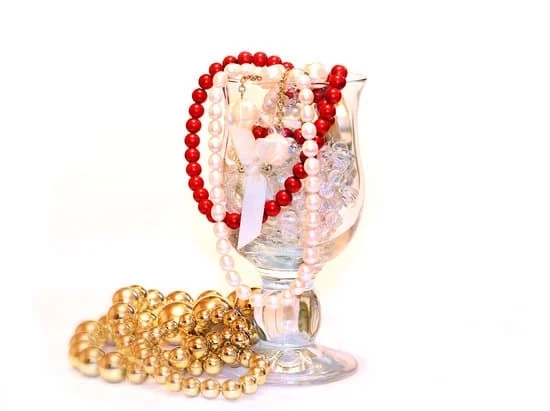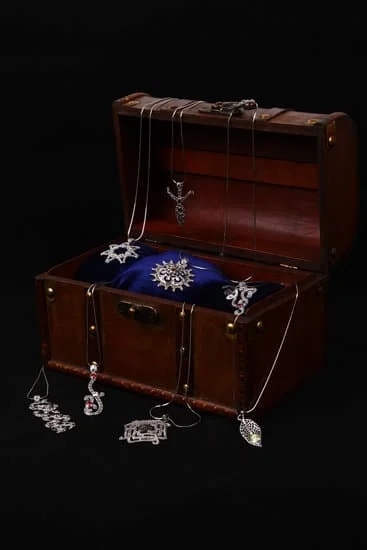Are you interested in learning how to make quality handmade jewelry? Whether you’re an aspiring jewelry designer or simply looking to create unique pieces for yourself, understanding the basics of handmade jewelry making is essential. This article will guide you through the process of creating beautiful and high-quality jewelry from start to finish. From choosing the right materials to perfecting your techniques, we’ll cover everything you need to know to get started on your handmade jewelry journey.
The first step in creating quality handmade jewelry is understanding the tools and materials needed for the craft. In this section, we will delve into the essential tools required for jewelry making, from pliers and wire cutters to bead mats and mandrels.
We will also explore a variety of materials commonly used in handmade jewelry, including gemstones, beads, metals, and wires. By gaining a thorough understanding of these foundational elements, you will be well-equipped to begin your journey towards creating stunning handcrafted jewelry pieces.
Once you have familiarized yourself with the basic tools and materials, it’s time to move on to choosing the right components for your creations. From selecting high-quality gemstones and beads to making informed choices about metals and wires, this section will provide valuable insights into ensuring that every element of your handmade jewelry meets your standards for quality.
Making thoughtful decisions about materials is crucial in crafting unique and stylish pieces that stand out in the world of handmade jewelry. Stay tuned as we guide you through this exciting process.
Choosing the Right Materials
When it comes to creating quality handmade jewelry, one of the most crucial aspects is choosing the right materials. The materials you select will greatly impact the overall look, feel, and durability of your jewelry pieces. Here are some tips and guidelines for making quality choices for your handmade jewelry:
1. Research and Education: Before diving into purchasing materials for your jewelry, take the time to research and educate yourself about different types of gemstones, beads, metals, and other materials commonly used in jewelry making. Understanding the characteristics, properties, and qualities of each material will help you make informed decisions when selecting materials for your pieces.
2. Quality Over Quantity: Always prioritize quality when choosing materials for your handmade jewelry. Opt for high-quality gemstones that are free from flaws or imperfections, and durable metals that will stand the test of time. While it may be tempting to cut costs by using lower-quality materials, investing in premium supplies will ultimately result in a better-finished product.
3. Consider Your Design Aesthetic: The materials you choose should align with the design aesthetic you want to achieve with your handmade jewelry. Whether you prefer a minimalist style with simple beads and subtle gemstones or a more ornate look with intricate details and vibrant stones, it is important to select materials that complement your creative vision.
By following these guidelines and taking ample time in sourcing out quality gems & beads as well as other essential raw material requirements have eventually warmed up how to make quality handmade jewelry without much of hardships involved.
Designing Your Masterpiece
When it comes to creating handmade jewelry, the design process is where you can truly let your creativity shine. Whether you’re working with gemstones, beads, or metals, there are a few tips and tricks that can help you create beautiful and unique pieces that stand out. Here are some key factors to consider when designing your handmade jewelry:
1. Inspiration: The first step in designing your masterpiece is finding inspiration. Whether it’s from nature, art, or fashion trends, look for elements that resonate with you and incorporate them into your designs.
2. Balance: When creating a piece of jewelry, it’s important to achieve a sense of balance in the design. This can be achieved through the use of symmetry, asymmetry, or by incorporating focal points to draw the eye.
3. Color and Texture: Consider the color palette and texture of the materials you are working with. Experiment with different combinations to create visually interesting pieces that make a statement.
Incorporating these tips into your design process can help you create handmade jewelry that is both stylish and unique. By taking the time to carefully consider each element of your design, you can ensure that every piece you create is truly one-of-a-kind.
Remember that quality handmade jewelry begins with a strong design foundation, so don’t rush this creative process – take your time to perfecting the details to make sure every piece reflects your artistic vision.
Perfecting Your Technique
Once you have familiarized yourself with the basic tools and materials needed for making handmade jewelry, it’s time to focus on perfecting your technique. This involves mastering the art of wire wrapping, beading, and metalwork. These skills are crucial in creating high-quality and visually appealing jewelry pieces.
One of the key elements in making quality handmade jewelry is mastering the technique of wire wrapping. This involves using thin wires to secure beads, stones, or other embellishments onto a base metal. Learning how to manipulate the wire effectively is essential in creating intricate and detailed designs. Practice is key when it comes to honing your wire wrapping skills, as it requires precision and dexterity.
In addition to wire wrapping, beading is another important aspect of handmade jewelry making. Choosing high-quality beads and properly stringing them together can significantly elevate the overall look and feel of your jewelry pieces. Furthermore, understanding different beading techniques such as peyote stitch, brick stitch, and right angle weave can add variety and uniqueness to your designs.
Mastering metalwork is also crucial for creating quality handmade jewelry. This includes processes such as soldering, forging, texturing, and finishing metals like silver, copper, or brass. Knowing how to work with different metals allows you to add dimension and sophistication to your creations. Understanding metal properties will also help ensure that your jewelry pieces are durable and long-lasting.
Perfecting Your Technique: Mastering the Art of Wire Wrapping, Beading, and Metalwork
| Technique | Description |
|---|---|
| Wire Wrapping | Using thin wires to secure beads or stones onto a base metal |
| Beading | Stringing high-quality beads together using various techniques such as peyote stitch or right angle weave |
| Metalwork | Soldering, forging, texturing, and finishing metals like silver or copper for added dimension and durability |
Quality Control
Inspecting and Testing Materials
When it comes to creating quality handmade jewelry, one of the most important aspects is ensuring that the materials used are of the highest standard. Whether you are working with gemstones, beads, or metals, it is crucial to carefully inspect and test each material to guarantee its quality.
This may involve checking for flaws or imperfections in gemstones, ensuring that beads are consistent in size and shape, or testing the durability and purity of metals. By taking the time to thoroughly assess your materials, you can be confident that your finished jewelry will meet your high standards.
Attention to Detail
Another essential component of quality control in handmade jewelry making is paying close attention to detail throughout the crafting process. This includes ensuring precise measurements and placements when wire wrapping or soldering, double-checking the symmetry and balance of beadwork, and meticulously polishing and finishing metalwork. By maintaining a keen eye for detail at every stage of production, you can elevate the overall craftsmanship of your jewelry pieces.
Seeking Feedback
In addition to self-assessment, seeking feedback from other experienced artisans or mentors can be invaluable in maintaining high standards for craftsmanship. Constructive criticism and insights from others can offer fresh perspectives on how to improve techniques or troubleshoot potential issues in your handmade jewelry. Participating in workshops, joining artisan communities, or seeking out mentorship opportunities can provide valuable guidance on how to make quality handmade jewelry while continuously improving your craft.
Adding the Finishing Touches
When it comes to making quality handmade jewelry, the finishing touches can really make a difference in the overall look and feel of your pieces. Incorporating clasps, hooks, and other findings is an essential part of creating a professional and polished final product.
Choosing the Right Findings
Selecting the right findings for your handmade jewelry is crucial to ensure both functionality and aesthetic appeal. Consider factors such as the type of material (e.g. silver, gold, or brass), the size and weight of your jewelry pieces, as well as the style and design you are aiming for.
Proper Installation Techniques
Once you have chosen the appropriate clasps, hooks, or other findings for your jewelry, it’s important to master proper installation techniques. Whether it’s attaching a lobster claw clasp to a necklace or adding jump rings to earrings, understanding how to securely and seamlessly incorporate these components is vital to achieving a high-quality finished product.
Creating Cohesive Finishing Touches
Incorporating clasps, hooks, and other findings that complement the overall design of your handmade jewelry is essential. Paying attention to details such as color coordination, texture matching, and overall cohesiveness will ensure that your pieces are not only well-crafted but also visually appealing. By taking these factors into account when adding the finishing touches to your creations, you can elevate their overall quality and desirability.
By mastering the art of incorporating clasps, hooks, and other findings into your handmade jewelry pieces with care and precision, you can ensure that each creation meets the high standards necessary for quality craftsmanship in this competitive market.
Packaging and Presentation
When it comes to packaging and presenting your handcrafted jewelry, it’s essential to showcase your pieces in a way that highlights their beauty and craftsmanship. One important aspect of this is the choice of packaging materials. Many artisans opt for eco-friendly options such as recycled paper boxes, fabric pouches, or reusable bags to align with the sustainable ethos of handmade goods. Not only does this add value to your brand, but it also resonates with environmentally conscious consumers.
In addition to choosing the right packaging, presentation is key when displaying your jewelry for sale. Consider investing in display stands, velvet or linen-covered pads, or shadow boxes to create an appealing backdrop for your handmade pieces.
These items not only enhance the aesthetic appeal of your jewelry but also provide a professional touch that can elevate the perceived value of your creations. Taking the time to set up an aesthetically pleasing display at craft shows, markets, or in-store showcases can make a significant difference in attracting potential customers.
Lastly, don’t underestimate the power of branding and personalization when it comes to packaging and presenting your handmade jewelry. A custom-designed logo sticker, personalized thank-you note, or branded business card can leave a lasting impression on customers and make your jewelry stand out from mass-produced alternatives.
| Packaging Materials | Presentation Tools |
|---|---|
| Recycled paper boxes | Display stands |
| Fabric pouches | Venlet or linen-covered pads |
| Reusable bags | Shadow boxes |
Promoting Your Creations
As you can see, knowing how to make quality handmade jewelry involves more than just crafting the pieces themselves. It also requires a deep understanding of how to promote and sell your creations to a wider audience. Whether you choose to sell your jewelry online or in-person, there are several key strategies that can help you reach more potential customers and grow your business.
One important aspect of promoting your handmade jewelry is having high-quality photographs of your products. Clear, well-lit images will showcase the beauty and craftsmanship of your pieces, making them more appealing to potential buyers. Additionally, creating a strong brand identity and telling the story behind your jewelry can help customers connect with your creations on a deeper level.
When selling in-person, consider participating in craft fairs, markets, and other events where you can showcase your handmade jewelry directly to customers. This allows you to engage with people face-to-face, explain the creative process behind your pieces, and build relationships with potential buyers. Providing business cards or other promotional materials at these events can also help customers remember you and find you later online.
In conclusion, learning how to make quality handmade jewelry is just the beginning – promoting and selling your creations is equally important for building a successful business. By following these tips for marketing and selling your jewelry online and in-person, you can increase visibility for your brand, connect with more customers, and ultimately grow your business. With dedication and persistence, you can turn your passion for handmade jewelry into a thriving venture.
Frequently Asked Questions
How Do I Start Making Quality Jewelry?
Starting to make quality jewelry involves learning and mastering the necessary techniques, investing in high-quality materials, and paying attention to detail. Researching different jewelry-making methods and styles can also help in producing beautiful and durable pieces.
How Do You Get Good Quality Jewelry?
Getting good quality jewelry involves researching reputable jewelers or designers, checking for authentic materials such as gold or silver, and examining the craftsmanship of the piece. It’s important to look for jewelry that is well-made and will stand the test of time.
What Type of Handmade Jewelry Sells Best?
Certain types of handmade jewelry tend to sell better than others, such as personalized or customized pieces that hold sentimental value to the buyer. Stylish and trendy designs are also popular, as well as unique statement pieces that stand out from mass-produced accessories. Ultimately, understanding the target market is crucial in determining which handmade jewelry will sell best.

Welcome to my jewelry blog! My name is Sarah and I am the owner of this blog.
I love making jewelry and sharing my creations with others.
So whether you’re someone who loves wearing jewelry yourself or simply enjoys learning about it, be sure to check out my blog for insightful posts on everything related to this exciting topic!





